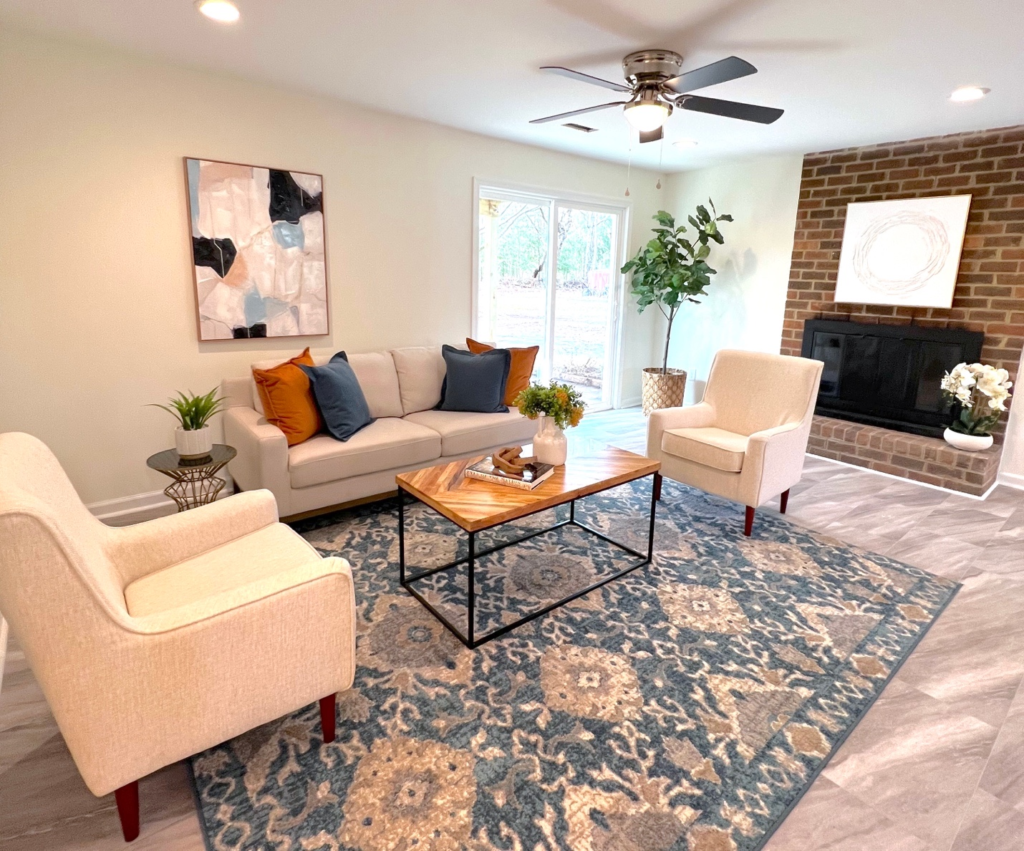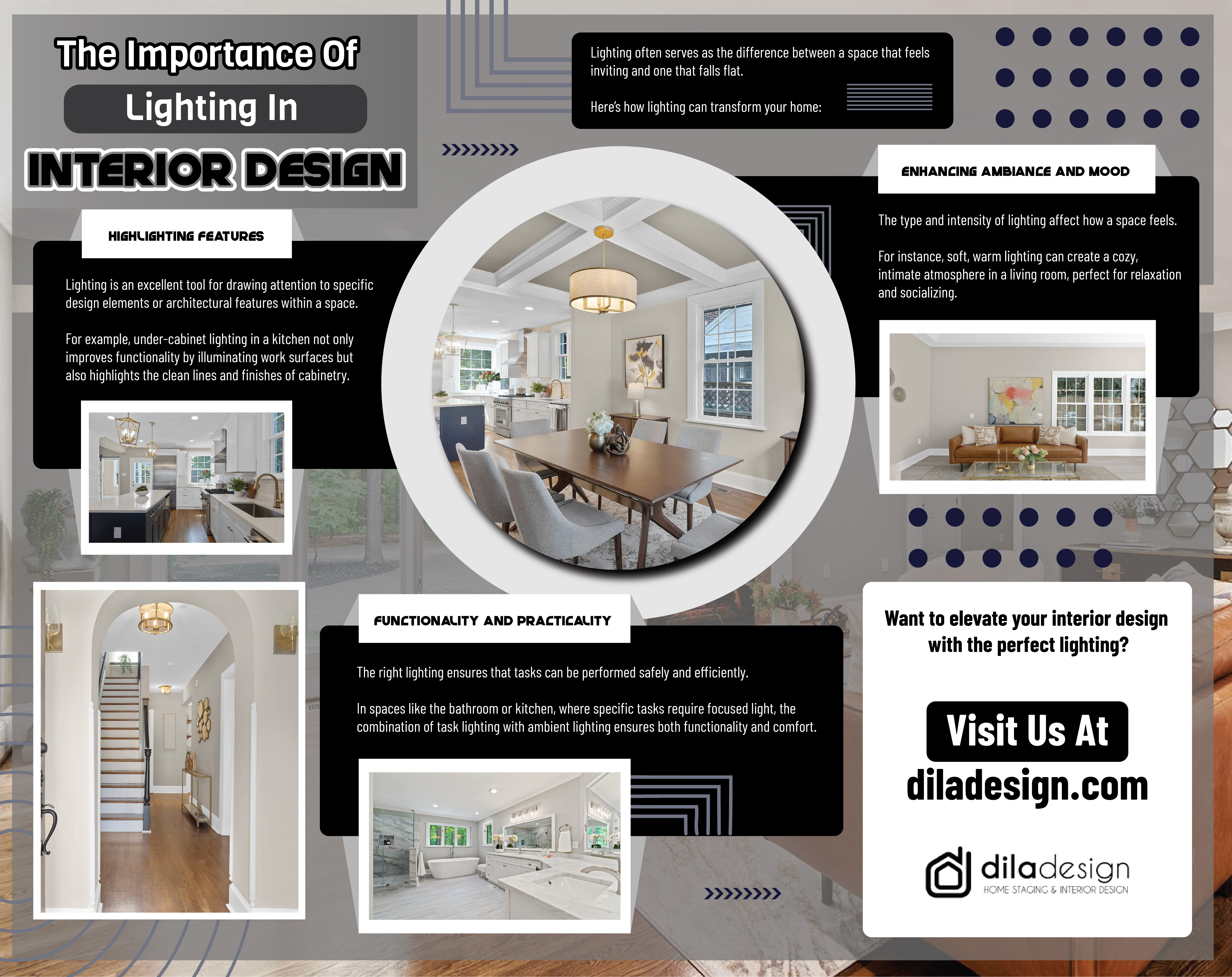Lighting is one of the most crucial elements in interior design, yet it’s often overlooked. The right lighting choices can transform a space, highlight key features, and create an atmosphere that enhances the overall appeal of a home.
Whether you’re designing a new space or refreshing an existing one, understanding the importance of lighting in interior design is essential to achieving a balanced and inviting environment.
1. Lighting Sets the Mood
The mood of a room is heavily influenced by its lighting. Bright overhead lights can create an energetic atmosphere, perfect for kitchens and workspaces, while soft, ambient lighting can evoke a sense of relaxation and comfort, ideal for bedrooms and living rooms. By strategically choosing lighting that complements the intended function of a room, you can create spaces that not only look great but also feel right.
For example, dimmable lights allow for flexibility, letting you adjust the brightness based on the time of day or the mood you wish to create. In a dining room, you might opt for brighter lighting during meals and softer lighting for after-dinner conversations, enhancing the room’s functionality while maintaining a warm, inviting ambiance.
2. Accentuates Design Elements
One of the key roles of lighting in interior design is to accentuate the architectural and decorative elements of a space. Properly placed lighting can draw attention to specific areas, such as a piece of artwork, a textured wall, or an architectural feature like a fireplace or staircase. This technique, known as accent lighting, creates visual interest and depth, making the space feel more dynamic.
For instance, recessed lighting can be used to highlight a feature wall, while track lighting can be positioned to showcase a gallery of photos or artwork. By using lighting to emphasize certain aspects of a room, you can guide the eye and create a more engaging environment.
3. Enhances Space Perception
Lighting plays a significant role in how we perceive space. A well-lit room can appear larger and more open, while poor lighting can make even a spacious room feel cramped and uninviting. Natural light is especially important in this regard. Large windows, skylights, and glass doors can flood a space with natural light, making it feel airy and expansive.

4. Adds Functionality
Beyond aesthetics, lighting in interior design serves a functional purpose. Task lighting, such as under-cabinet lights in the kitchen or reading lamps by the bed, ensures that specific activities can be performed safely and efficiently. Good task lighting reduces eye strain and improves the usability of a space.
5. Energy Efficiency and Sustainability
In today’s design world, energy efficiency is a top priority. The choice of lighting can significantly impact a home’s energy consumption. LED lights, for example, use a fraction of the energy consumed by traditional incandescent bulbs and have a much longer lifespan. Incorporating energy-efficient lighting options not only reduces utility bills but also aligns with sustainable design practices.
Illuminate Your Home with Dila Design
Lighting is more than just a functional necessity; it’s a powerful design tool that can transform your home. As a home staging company in Richmond, VA, Dila Design understands the impact of lighting in interior design and can help you make strategic lighting choices that elevate your space.
Whether you’re looking to enhance the mood, highlight architectural features, or improve functionality, our expert team is here to guide you every step of the way. We also offer color consultation services to help you create a space you truly love.
Contact us today to learn how we can light up your home and bring your design vision to life.

